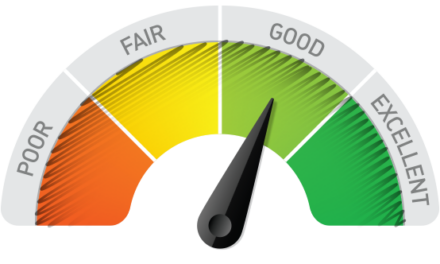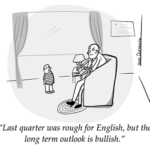Learning begins with knowledge, and good schools are attentive not just to how students learn but what content they learn.
Amid all the attention to what makes a good school — and, urgently, a good online school — far too little is being paid to what kids are supposed to learn there: the content of their curriculum. That’s the challenge I attempt to tackle here.
Indeed, I’ve been aimed in that direction since the 1980s. While serving as U.S. Secretary of Education, I coined the phrase “The Three C’s” that, properly conceived and implemented, would go a long way toward mitigating the “risk” that the Commission on Excellence in Education, in its famous 1983 A Nation at Risk report, had said our nation was facing.
The C’s were content, character, and choice. Taking them in reverse order:
- Choice is an important value, and its spreading adoption in its many forms has opened new avenues for millions of families. But it is also a means to an end. Choice is a tool to drive the other two C’s. As with any tool, it has limitations.
- Paraphrasing the philosopher Martin Buber, all education is the education of character, or can be. Character is developed by rule, precept, and, most importantly, example. The ethos of our schools matters.
- Content is my present focus. As Saint Paul might say, content is the greatest of the three. I applaud the many contemporary calls for better civics and history education, yet I submit that it is only one piece of the more fundamental problem of content that we must address.
Knowledge matters. It is the critical building block for successful instruction. It’s what impelled me, as secretary of education, to develop model school curricula that I dubbed James Madison Elementary School and James Madison High School (Bennett, 1987, 1988). To be clear, these content-centric curricula were models that I recommended, even urged communities and schools to adopt, but that I never thought Uncle Sam had a role in making happen. Then and now, I respect the statutory prohibition on federal involvement with curriculum. But that has never stopped me from suggesting the kind of curriculum that I believe our children and our nation need. And not long after leaving government, I teamed up with John T. Cribb and Chester E. Finn Jr. to write The Educated Child: A Parent’s Guide from Preschool Through Eighth Grade (2000), wherein we detailed what children ought to learn and schools — abetted by parents — ought to see that they learn.
Why knowledge matters
Many of the education fads of the last decade — for example, “21st-century skills,” “balanced” reading instruction, the “C3” social studies framework, and more — have centered on the unproven and psychologically erroneous notion that skills can be divorced from knowledge. Even if it were possible to learn skills without knowledge, skills alone would not suffice. It is simply not enough to learn how to do something. A student must acquire real, hard knowledge, such as vocabulary and history and science facts. It is fine to “learn how to learn,” but you must start by learning something, beginning in the elementary grades that today are often content-barren (Hirsch, 2009; Steiner, 2017).
One of the foremost champions of content and the critical place it must play in a comprehensive vision of education policy has long been E.D. Hirsch Jr. Today, a contingent of education thinkers are trying to build on Hirsch’s seminal work. To quote an important content ambassador and distinguished cognitive psychologist, the University of Virginia’s Daniel Willingham (2013):
When I hear that science, history, geography, and other core subjects are being squeezed out in frantic preparation for reading tests, I am concerned. It may help with reading tests (which are really decoding tests) in first grade, but this practice will come back to haunt school systems when these kids get to fourth or fifth grade — their lack of world knowledge will hurt them on reading comprehension tests.
Learning begins with knowledge. Consider vocabulary, a fundamental building block of knowledge. As Hirsch first demonstrated and as others have confirmed, vocabulary is a direct predictor of SAT scores, which are well correlated with success in college and beyond. When replacing knowledge — in this instance, vocabulary — with skills, schools directly undermine the first link in that chain of success. As Hirsch (2006) has written:
Reading, writing, and all communication depend on hidden, taken-for-granted background knowledge that is not directly expressed in what is said or written. Therefore, in order to teach children how to understand what is said or written, we must teach them that taken-for-granted background knowledge. (pp. 121-122)
When schools attempt to divorce skills from knowledge, those most harmed are students who have the least exposure to knowledge outside school. As Willingham (2018) wrote, “Disadvantaged students are disproportionately dependent on schools to provide the background information that will make them effective readers because wealthy students have greater opportunity to gain this knowledge at home.” Vocabulary is one area where we see gaps in knowledge before students even enter school. A study released in April 2019 found that children would have heard the following numbers of words by the time they were five years old based solely on how often they were read to:
- Never read to: 4,662 words
- Read to 1-2 times per week: 63,570 words
- Read to 3-5 times per week: 169,520 words
- Read to daily: 296,660 words
Note that these figures are solely for words read and do not include the differences associated with conversation and other kinds of learning (Logan et al., 2019).
A robust set of shared knowledge is vital both to an individual’s ability to succeed and to a society’s ability to thrive. One might call it a common set of core knowledge. At the risk of offending the fainthearted, it could even be shortened to “common core.”
Curriculum and policy consensus
Recall that the basic concept of the Common Core took shape at the famous 1989 Charlottesville, Virginia, education “summit” attended by 49 of the nation’s governors and President George H.W. Bush. At that meeting, an idea was adopted that had long been under development by thought leaders on both right and left. The concept was that establishing universal high standards grounded in a shared set of knowledge that all citizens should possess was critical to addressing many of the problems that A Nation at Risk had illuminated.
It was a sound concept then, founded in fundamental conservative philosophy and consistent with liberal principles. It remains a sound concept today and one that liberals and progressives should readily embrace.
What was effectively launched at that summit mutated over two decades into something it never should have become. This is the result of politics and a failure of leadership, not flaws in the idea itself. To be clear, I am not suggesting relitigating what became known as Common Core. But a common basis of knowledge is required to unite a nation’s people, to build the unum that accompanies the pluribus. Whatever the background, race, or ethnicity any individual student brings to school, success and contentment depend upon knowing things.
Choice and accountability are about processes — very important processes with deep moral implications and complex practical dimensions, all in need of serious and reinvigorated attention. But content is the substance of it. Thought leaders and public officials have expended relatively little effort on developing a durable and robust consensus to inform and drive policy making related to content. As stated well by Robert Pondiscio (2017), “There is a story, and it’s about curriculum — perhaps the last, best, and almost entirely un-pulled education-reform lever.”
If we are to build consensus around content, we must do the hard work of developing concrete solutions for policy makers, work that must begin with reviewing a half-dozen exhausted alternatives of what not to do:
- Do not think skills can be taught independent of knowledge.
- Do not back away from the demand for robust, comprehensive standards in all critical subjects, not only math and English.
- Do not allow “skill-based” fads to distract from the focus on content.
- Do not allow testing in reading and math — obviously critical — to have the unintended consequence of crowding out other critical content.
- Do not seek federal mandates for what states and schools should do on content (and perhaps avoid future use of the word common in the same paragraph as core).
- Do not think that content isn’t central to every educational endeavor, including the current enthusiasm for career and technical education.
Learning from states
A list of “do nots” is not enough for shaping and changing policy. So I offer some concrete thoughts, focused at the state level, drawing on a paper released in April 2019 by Chiefs for Change in collaboration with David Steiner and Ashley Berner at the Johns Hopkins Institute for Education Policy. They found that improvements in content and curriculum are potentially far more effective — and certainly more cost-effective — than other fashionable reforms, such as class-size reduction.
Massachusetts
It’s important to reflect on the experience of Massachusetts in aggressively pursuing the standards-and-curriculum path. Beginning in 1997, the commonwealth mandated excellent content, created at least some public school choices, developed and mandated a challenging high school graduation test, and created a content-based test that new teachers had to pass.
Perhaps most important is that these important steps had both Democrats and Republicans among their proponents. This was a collaborative effort involving, among the principals, a libertarian Republican governor, Bill Weld; a conservative Democrat whom Weld defeated but later appointed to chair the state board of education, John Silber; a very liberal state senator, Tom Birmingham; and a longtime Democrat, Thomas Finneran, who would become speaker of the Massachusetts House. They and others combined to play a critical role, offering a rare but exemplary display of sustained bipartisan commitment.
The results are well-known: If Massachusetts were a country, its Program for International Student Assessment (PISA) scores would have made it 10th in the world. Its National Assessment of Educational Progress (NAEP) scores rose impressively — and led the country. And its results improved for students at all socioeconomic levels.
That path required a sustained commitment across many different policy dimensions. For example, while standards, assessments, and the development of challenging curriculum frameworks were the focus of the first phases, shortly thereafter the effort moved to standards for educators in preservice and professional development. In 1998, “expanding educators’ knowledge of subject matter” was listed as the highest priority in the state’s plan for professional development. It’s no coincidence that Massachusetts has regularly scored among the highest-achieving states in the nation.
Louisiana
Another state of interest is Louisiana. Almost a decade ago, the Bayou State made significant policy moves focused on content and curriculum. Louisiana created processes to identify content-rich, high-performing curricula and created systems to encourage (but not mandate) the use of such curricula. Louisiana has attempted with apparent success to incorporate teachers into this process and thus created the kind of bottom-up buy-in that is so important to sustain the implementation of any reform.
Louisiana was also among the first states to be approved in the Innovative Assessment Pilot program under the Every Student Succeeds Act (ESSA). That is relevant because the thrust of the state’s new pilot builds upon its decade-long effort toward a more knowledge-based approach to curriculum.
Florida
Florida is another state worth noting. It adopted a comprehensive reform strategy 20 years ago and has stuck with and built upon those reforms. The basics of the strategy were — and remain — strong accountability, creation of choice and options, and driving evidence-based practices throughout the state’s schools. Michael J. Petrilli (2019) recently summed up the results of those 20 years of work as follows:
The most compelling numbers come from the National Assessment of Educational Progress, a.k.a. The Nation’s Report Card. From the late 1990s until 2017, the reading performance of Black 4th-graders in Florida skyrocketed 26 points — equivalent to more than two grade levels worth of progress. For Hispanic students, the gain was 27 points, and for low-income kids it was an astonishing 29 points. The numbers for 8th-grade math were almost as impressive: rises of 27 points for Black, 19 for Hispanic, and 21 for low-income students.
All of this was achieved while per-pupil spending in Florida remained flat at about $9,750 per child in 2016 dollars.
A path forward for policy makers
With that background, here are at least the beginnings of concrete ideas for state policy leaders to consider:
- Create processes and deadlines for the creation of rigorous state standards in all core subjects where such standards do not yet exist; institute regular processes and deadlines for ongoing tough and honest review and improvement of those standards.
- Develop a mechanism to examine and rate curricula widely offered in the state on critical measures such as alignment with standards and richness of content.
- Review teacher education, licensing, and professional development programs and expenditures with a focus on developing requirements and/or incentives to improve the subject matter knowledge of the state’s teaching force.
- Create data and information to advance the content discussion, bringing transparency to what curricula are in use. Engage in research on how curriculum and content choices affect students.
- Develop better accountability systems that encourage strong content-based learning, and explore innovative approaches that link a content/knowledge-rich approach to the state’s assessment system. As former Pennsylvania Senate education chair John Eichelberger pointed out to me, policy makers need practical ways to see how well what they are doing on content is actually working.
Real change of the kind suggested here requires sustained commitment — as we’ve seen in the states mentioned above. It requires buy-in up and down the system, which takes time and skillful leadership to achieve. In most states, sustaining a strategy over the long term requires at least some sort of bipartisan involvement.
That’s rare, nowadays, but not absent and certainly not unimaginable. It mostly takes leadership and goodwill, along with a plan worth pursuing over time.
I contend that a good school, a great school, a great set of schools, even a great state of schools, are all possible in today’s America. It’s possible because once it was actual. And we see real possibilities of sound educational actuality developing in states today. I believe the areas of content and curriculum reform are ripest and most urgently in need of development among education leaders. I do not call these ideas new, but they are certainly “fresh,” given the many decades of drift and neglect on questions of content in our schools. To borrow from author Tom Wolfe, what we need most to do is engage in a “great relearning.” Content must be at the center of any new consensus on education.
References
Bennett, W.J. (1987). James Madison High School: A curriculum for American students. Washington, DC: U.S. Department of Education.
Bennett, W.J. (1988). James Madison Elementary School: A curriculum for American students. Washington, DC: U.S. Department of Education.
Bennett, W.J., Finn, C.E., Jr., & Cribb, J.T.E., Jr. (2000)
The educated child: A parent’s guide from preschool through eighth grade. New York, NY: Free Press.
Chiefs for Change. (2019). Choosing wisely: How states can help districts adopt high-quality instructional materials. Washington, DC: Author.
Hirsch, E.D., Jr. (2006). The knowledge deficit: Closing the shocking education gap for American children. New York, NY: Houghton Mifflin Harcourt.
Hirsch, E.D., Jr. (2009, Winter). Creating a curriculum for the American people. American Educator.
Logan, J.A.R., Justice, L.M., Yumuş, M., & Chaparro-Moreno, L.J. (2019). When children are not read to at home: The million-word gap. Journal of Developmental and Behavioral Pediatrics, 40 (5), 383–386,
Petrilli, M.J. (2019, May 28). The results of Florida’s education reforms are impressive. Their return on investment is totally off the charts. Education Next.
Pondiscio. R. (2017). Louisiana threads the needle on ed reform. Education Next, 17 (4).
Steiner, D. (2017). Curriculum research: What we know and where we need to go. Standards Work, 1-13.
Willingham, D. (2013). Q&A with Dr. Daniel Willingham. Reading Rockets.
Willingham, D. (2018, March 26). A brief appreciation of E.D. Hirsch [Blog post]. Daniel Willingham — Science and education.
Note: This article was adapted from How to educate an American: The conservative vision for tomorrow’s schools, edited by Michael J. Petrilli and Chester E. Finn (Templeton Press, 2020).
ABOUT THE AUTHOR

William J. Bennett
WILLIAM J. BENNETT was the U.S. Secretary of Education from 1985 to 1988. He is the author of multiple books, including Is College Worth It? with David Wilezol . He currently hosts the podcast The Bill Bennett Show.










